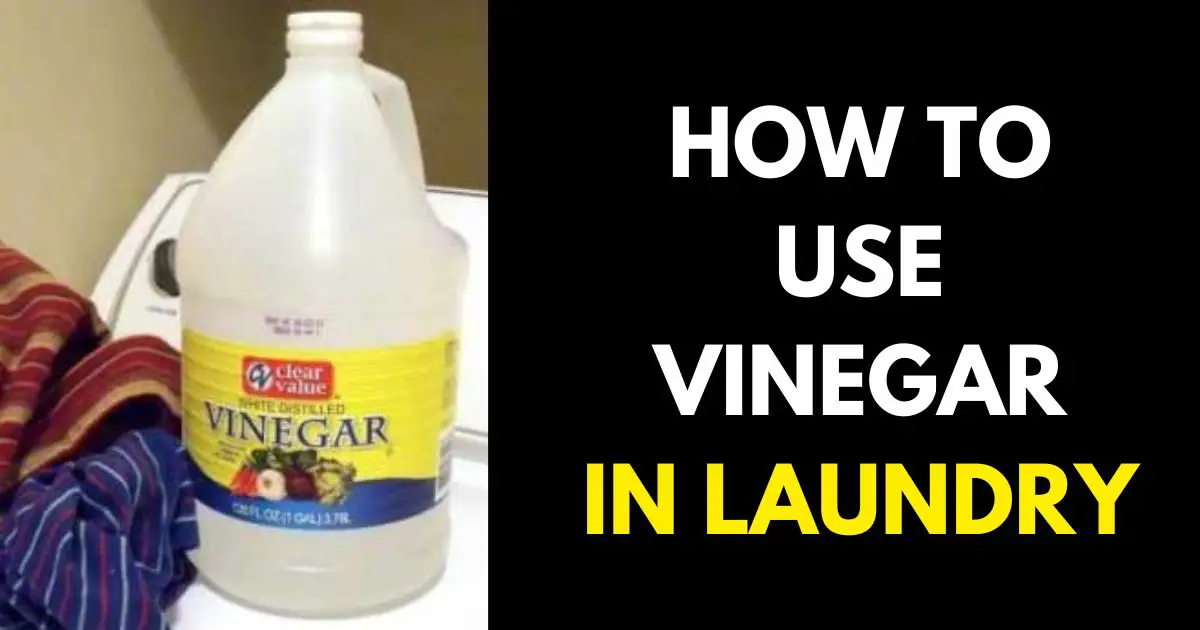Adding vinegar to your laundry routine offers a range of benefits, such as whitening, brightening, odor reduction, and fabric softening—all without resorting to harsh chemicals. Not only is vinegar cost-effective, but it’s also safe to use in both standard and high-efficiency washers. When selecting vinegar for laundry purposes, opt for distilled white vinegar, as it lacks tannins that could potentially stain your clothes. In case you only have cider vinegar, dilute it with water before applying it directly to your garments.
Top Uses for Vinegar in Laundry
Banishing Mildew Odor
To eliminate moldy or sour odors from towels, add 2 cups of distilled white vinegar to a wash cycle filled with hot water. For dark-colored towels, use warm water. Run a complete cycle with vinegar and then follow it up with a second complete cycle using detergent.
This method is effective for minor mildew and odor issues; for more severe problems, a more aggressive treatment may be necessary.
Dissolving Soap Residue
The acetic acid in distilled white vinegar is adept at dissolving residues left by soaps and detergents in fabrics. Simply add 1/2 cup of vinegar to the fabric softener dispenser or manually introduce it at the beginning of the rinse cycle.
Brightening and Whitening Clothes
Revive dingy white cotton items like dishcloths, underwear, and socks by adding 1 cup of distilled white vinegar to 1 gallon of water in a large pot. Heat the solution to boiling, turn off the heat, add the items, let them soak overnight, and launder as usual to restore their brightness.
Naturally Softening Fabrics
Distilled white vinegar serves as a natural fabric softener, eliminating trapped body soil and detergent residue that can make laundry feel scratchy. Use 1/2 cup in the final rinse cycle as a substitute for commercial fabric softeners. This not only softens fabrics but also ensures a fresh and clean result.
Reducing Lint and Pet Hair
To prevent lint and pet hair from sticking to your clothes, add 1/2 cup of white distilled vinegar to the fabric softener dispenser or directly into the washer at the beginning of the rinse cycle. Avoid using it alongside commercial fabric softeners.
Combatting Underarm Odor
Say goodbye to perspiration odors and stains on washable white clothes by using undiluted distilled white vinegar in a spray bottle.
Spray the vinegar directly onto the underarm areas, let it sit for at least 10 minutes, and then toss the garment into the washing machine. For stiff fabrics, use a soft brush to break up residue before washing.
Removing Hem Lines
Vinegar is an excellent solution for hiding alteration marks. Dampen a white cloth with distilled white vinegar, place it under the fabric on an ironing board, and press.
This method erases tiny holes along seams or hemlines, and using the correct ironing temperature with a pressing cloth prevents shiny marks.
Preserving Dark Clothes
Maintain the vibrancy of dark-colored clothes by adding 1/2 cup of distilled white vinegar to the final rinse cycle. This helps eliminate soap and detergent residue that can dull the color.
Eliminating Strong Odors
Combat stubborn odors like cigarette smoke or cooking smells by soaking stinky clothes in warm water mixed with 1 to 2 cups of distilled white vinegar overnight.
For dry-clean-only items, hang them above steaming water with 2 cups of vinegar in the bathtub, allowing steam to penetrate the fibers.
Cleaning Your Washing Machine
Remove soap scum and mineral deposits from washing machine hoses by running a complete wash cycle with 2 cups of distilled white vinegar in hot water. Do this quarterly to maintain optimal performance, especially for automatic dispensers.
Note: Check your washer’s manual, as some manufacturers caution against frequent vinegar use, which may harm rubber gaskets and seals.
Cleaning a Sputtering Iron
Dissolve mineral deposits in your iron by filling the water chamber with a mixture of equal parts distilled white vinegar and water. Steam for five minutes in an upright position on a heatproof surface. After cooling, rinse the tank with distilled water, shake water through the vents onto a cloth, and iron an old cloth to expel any residue before ironing your garments.
When to Avoid Using Vinegar in Laundry
- Avoid Mixing with Bleach: Never mix vinegar with chlorine bleach, as this combination produces toxic chlorine gas.
- Avoid Vinegar and Hydrogen Peroxide Combo: Do not mix vinegar with hydrogen peroxide for stain removal, as the combination creates peracetic acid, a corrosive and irritating substance.
- Use Distilled White Vinegar, Not Cleaning Vinegar: Do not substitute cleaning vinegar for distilled white vinegar in laundry, as cleaning vinegar has higher acidity and may bleach dark colors.
- Caution with Athletic Wear: While vinegar effectively removes odor-causing buildup from athletic wear, excessive use can break down elastic fibers due to its acidity.
- Prevent Bleaching on Dark Colors: Never pour undiluted vinegar directly on dark-colored clothing to avoid accidental bleaching, especially for items with unstable dyes.
Where to Add Vinegar in Your Washing Machine
When incorporating vinegar into your laundry routine, it’s crucial to place it correctly based on the type of washing machine you have.
- For Front-Load Washers: Add vinegar into the fabric softener dispenser when using a front-load washer.
- For Top-Load Washers: Once the drum of the top-load washing machine has filled with water during the rinse cycle, add vinegar directly to it.
- During Washer Cleaning: When cleaning your washer, add vinegar to all the dispenser units (for front-load machines) or directly to the washer drum (for top-load machines). This ensures effective cleaning without compromising the machine’s components.
If you found these tips helpful, consider sharing this post on Pinterest!



